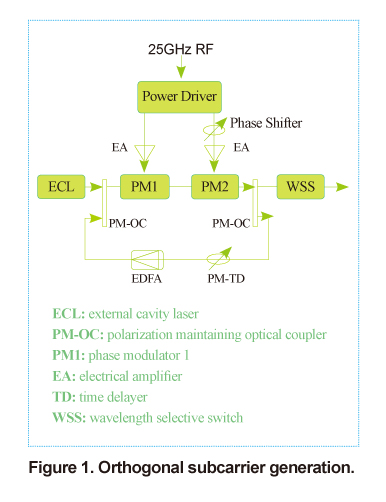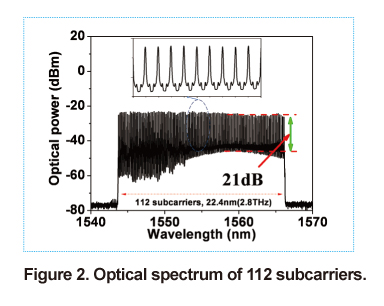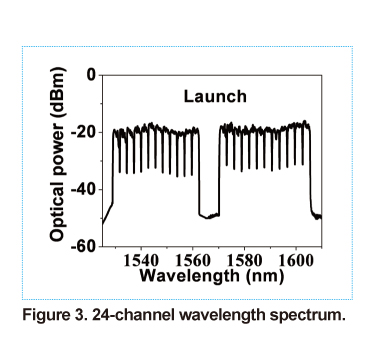Embracing the 100G Era
According to data released by the OIF, the average annual traffic growth of network operators is much higher than their revenue growth. Operators have to reduce cost per unit of traffic to relieve revenue pressure. The most effective means of lowering TCO is to improve system transmission capacity. Through the joint efforts of the IEEE, ITU-T and OIF, 100G standards have been drafted. Vendors worldwide have released or will soon release their 100G products, and the 100G DWDM era is just around the corner.
Ready for 100G Commercialization
Mature 100G standards will pave the way for widespread 100G deployment. ZTE has rolled out an advanced 100G DWDM solution to meet the need for large-scale commercial 100G. ZTE’s 100G DWDM system has the following features:
- The system uses PM-QPSK modulation, coherent demodulation, and equalization/compensation. An optical receiver can tolerate chromatic dispersion of up to 50,000ps/nm and polarization mode dispersion of over 90ns. This means that chromatic dispersion compensation modules (DCMs) for fiber links do not need to be used. The engineering and OAM are also simplified in 100G DWDM equipment.
- The system supports 80 channels in the C-band with the same 50GHz channel spacing used in 10G and 40G DWDM systems. Transmission capacity reaches up to 8Tb/s, ten times the capacity of a 10G DWDM system. This meets the increasing demand for data services and ensures longer equipment lifecycle.
- Core chips in the system are manufactured using a cutting-edge 40nm CMOS process. This process allows the system to be highly integrated, consume less power, and have better signal processing capability than the 65nm CMOS process. High integration enables advanced soft-decision forward error correction (SD-FEC), which allows for much higher error-correction performance than the commonly-used hard-decision FEC. In the system, OSNR tolerance is increased by about 2dB, and transmission capacity is increased by about 60%. The system can transmit over more than 1500km (20×22dB) without electronic regeneration. The transmission distance is close to that of a 10G DWDM system.

ZTE is now ready for 100G commercialization. The company cooperated with operators in testing its 100G DWDM products, and good results were achieved. With the world’s best high-performance 100G DWDM products, ZTE offers the most competitive 100G solution.
Leading the Industry with Beyond-100G
As well as developing 100G products, ZTE has also started researching beyond-100G optical transmission technology. Significant progress has been made in this research. In 2011, ZTE performed two verification tests on its industry-leading 100G DWDM system.
11.2 Tb/s single-channel transmission test
ZTE achieved a single-channel fiber-optic transmission rate of 11.2Tb/s in a first-time experiment at the Optical Fiber Communication Conference in March 2011.
Optical signals were successfully transmitted over a stretch of 640km standard single-mode fiber. ZTE’s patented carrier generation technology generates 112 orthogonal subcarriers with 25GHz channel spacing and 22.4nm spectral width (Fig. 2 and Fig. 3). With each subcarrier bearing 100Gb/s optical signals, the experiment realized optical signals with a single-channel rate of 11.2Tb/s (10Tb/s net line rate plus overheads such as FEC).


24 Tb/s transmission test
ZTE announced the world’s first 24Tb/s DWDM prototype at the Opto-Electronics and Communications Conference in July 2011.
The transmission rate of 24Tb/s (24×1.3Tb/s) sets a new record in optical networking. The 24Tb/s DWDM system has 24 wavelength channels (12 C-band and 12 L-band) with 350GHz channel spacing (Fig. 3).
Based on optical OFDM technology, a laser source generates 13 orthogonal subcarriers for each channel, and each subcarrier bears 100Gb/s optical signals. The transmission per channel is 1.3Tb/s (1Tb/s net after eliminating FEC), and a 24-channel fiber provides a transmission rate of 24Tb/s. The transmission distance is 2400km standard single mode fiber only by using the standard erbium doped fiber amplifiers.
Conclusion
Operators worldwide have already started planning to commercialize 100G transmission. ZTE can provide the most competitive 100G solutions. ZTE is continually refining its 100G products and creates value for operators. As 100G products become more commercialized, the focus of current research will turn towards beyond-100G. ZTE has developed beyond-100G technology that is at world-class standard, and has established beyond-100G research programs with numerous operators to jointly lead the beyond-100G trend.